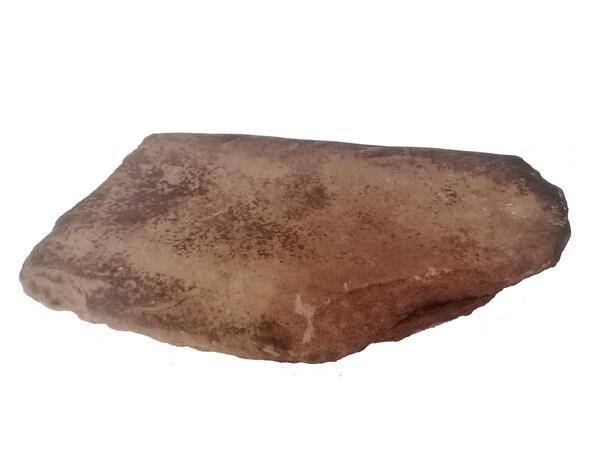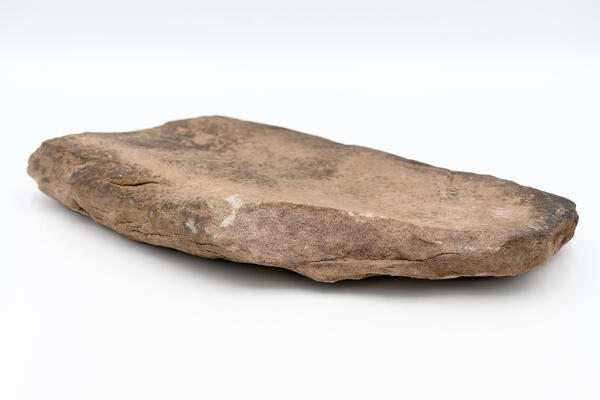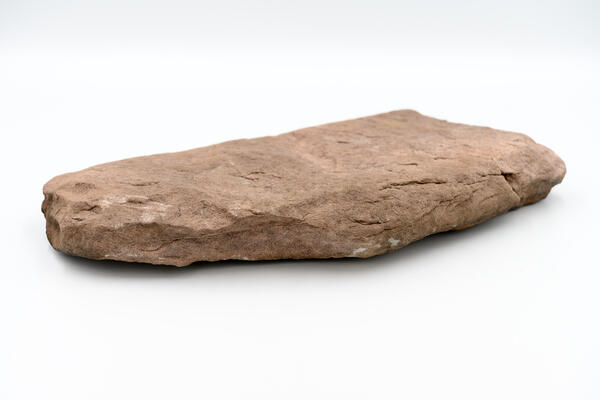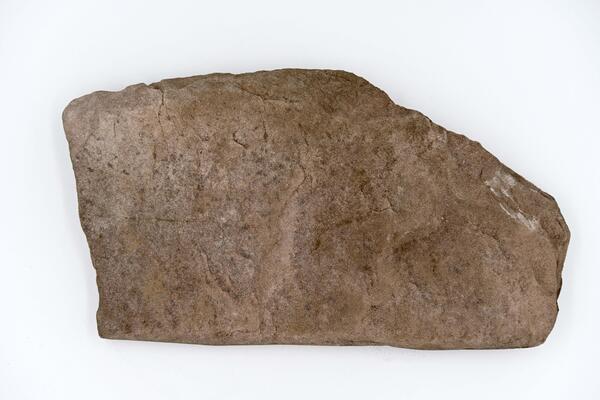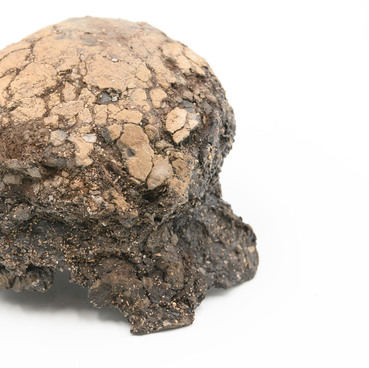A grindstone dating back to the Early Neolithic Period is on display in the Polyarny Museum of History and Local Lore. The stone was discovered during excavations at Mayak 3 settlement.
Archaeologist Nina Gurina called Drozdovka Bay the archaeological pearl of the Kola Peninsula. There are several dozen archaeological sites belonging to different eras. Having so many sites close to each other provides archaeologists with a plethora of material. With all the settlements being in the vicinity of each other, one can more accurately trace the changes in tools of labor, life and economy that occurred over time.
Mayak 3 settlement is located in Drozdovka Bay, in the northeastern part of the coast of the Kola Peninsula. The bay is long and narrow, and therefore well protected from the winds. It is home to many small and quiet coves which attracted seals, who in turn attracted people to these parts. The settlement is located in a sheltered hollow, between two quiet coves. A small stream flows nearby. The shore is flat, which made it easier to transport goods from the sea. The name of the settlement was given after the navigation sign located nearby.
Mayak 3 settlement belongs to
the Neolithic period and dates back to about 4000–6000 years ago. The settlement was short-lived. The Neolithic, also known
as the New Stone Age, began with the appearance of ceramics and ended with the
development of metallurgy. During the Neolithic period, grinding was a widely
used crafting technique, hence, tools and weapons could be made of bone or even stone. Grinding was used to give tools
a neat and smooth shape, which helped reduce resistance and friction during
work, while also increasing the tool’s durability. To make the tool one needed
to saw or crack the raw material into a rough shape of the future tool, after
which the resulting workpiece was sanded on a slab of sandstone until it
reached the desired form. Grindstones varied in size. The presented grindstone
is quite large and heavy and could only be used by relatively sedentary
cultures like the one of Sami people.

